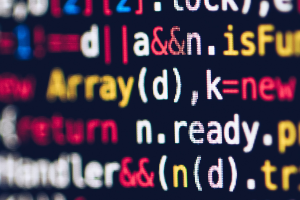

ID-2: USB /dev/sdb model: BUP_BK size: 4000.8GB Network: Card-1: Realtek RTL810圎 PCI Express Fast Ethernet controllerĭriver: r8169 v: 2.3LK-NAPI port: 2000 bus-ID: 02:00.0ĭrives: HDD Total Size: 4500.9GB (9.8% used) Sound: Advanced Linux Sound Architecture v: k4.13.0-25-generic GLX Version: 3.0 Mesa 18.0.5 Direct Rendering: YesĪudio: Card Intel 7 Series/C216 Family High Definition Audio Controller Resolution: Renderer: Mesa DRI Intel Ivybridge Mobile Graphics: Card: Intel 3rd Gen Core processor Graphics Controllerĭisplay Server: X.Org 1.18.4 drivers: intel (unloaded: fbdev,vesa) Machine: System: LENOVO product: IdeaPad Z580 v: Lenovo Z580 I got the following info from running inxi -Fxz: Gparted shows this HD now as unallocated 3.64TB. Iwent back to try the LUKS format and got the same error as above. I tried to do the same with Veracrypt but after 12 hours the app said that it would take 8 days to finish the task. I went back to try formating with WDE+LUKS and got the same error. If I remember the sequence correctly I was able to format at this point, but the format was almost instantaneous. I then went into gparted and tried to format it through this but it said that I needed to delete the partitions (there were 2) before I could continue. When I went to try this again I got the following error: "Error wiping device: Command-line `wipefs -a "/dev/dm-2"' exited with non-zero exit status 1: wipefs: error: /dev/dm-2: probing initialization failed: Device or resource busy About halfway through we lost power (I live in a developing country) for a few minutes (I have no battery installed). I went into disks and started the Linux WDE with LUKS. I wanted to wipe it and whole disk encrypt it. Specified in the corresponding Arch Linux package.I have a 4TB Seagate HD attatched to my Lenovo Z580 Mint Mate 18.3.
#WIPEFS DEVICE BUSY MANUAL#
License, except for the contents of the manual pages, which have their own license The website is available under the terms of the GPL-3.0 Using mandoc for the conversion of manual pages. Package information: Package name: core/util-linux Version: 2.38.1-4 Upstream: Licenses: GPL2 Manuals: /listing/core/util-linux/ Table of contents The wipefs command is part of the util-linux package whichĬan be downloaded from Linux Kernel Archive. Restores an ext2 signature from the backup fileįor bug reports, use the issue tracker at. Note that by default wipefs does not erase nested partition In this case the wipefs scans theĭevice again after each modification (erase) until no magic string is When option -a is used, all magic strings that are visibleįor libblkid(3) are erased. (since v2.31) lists all the offset where a magic strings have been Magic strings on the device (e.g., FAT, ZFS, GPT).


Note that some filesystems and some partition tables store more This feature can be used to wipeĬontent on partitions devices as well as partition table on a disk device,įor example by wipefs -a /dev/sdc1 /dev/sdc2 /dev/sdc. Is called as the last step and when all specified signatures from all Wipefs calls the BLKRRPART ioctl when it has erasedĪ partition-table signature to inform the kernel about the change. output columns-list in environments where a stable output is Always explicitly define expected columns by using So whenever possible, you should avoid using default When used without any options, wipefs lists all visibleįilesystems and the offsets of their basic signatures. wipefs does not erase theįilesystem itself nor any other data from the device. Signatures (magic strings) from the specified device to make the Wipefs can erase filesystem, raid or partition-table Wipefs - wipe a signature from a device SYNOPSIS


 0 kommentar(er)
0 kommentar(er)
